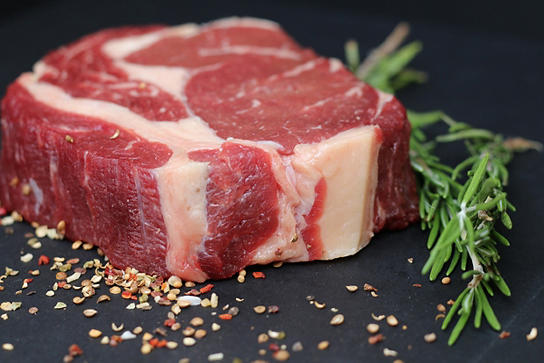The sample of cooked or uncooked meat is homogenized and the nitrate and nitrite extracted in hot water. After the addition of an ISAB, the nitrate is determined with a nitrate ISE. The nitrite in the sample is then oxidized to nitrate which is again estimated. The difference between the two values giving the nitrite concentration.
Equipment Required
- pH/ION analyzer or pH meter with millivolt scale
- Nitrate combination ISE
- Blender/macerator/homogenizer
- Acurate balance
Reagents
Nitrate stock standard (0.1M)
Potassium permanganate (0.1M)
ISAB: Sodium dihydrogen orthophosphate (1M)
Standard Preparation
Dissolve 15.601g NaH2PO4.2H2O in de-ionized water in a 100-ml volumetric flask. Dilute to the mark.
From this stock standard prepare 10-2 and 10-4M standards by serial dilution. If a pH meter with a millivolt scale is being used, prepare 2 further standards, ie. 10-3M and one other to enable a suitable standard curve to be constructed.
ISAB Preparation
Dissolve 15.601g NaH2PO4.2H2O in de-ionized water in a 100-ml volumetric flask and dilute to the mark.
Sample Preparation
- Weigh accurately 25g of sample and completely homogenize using, eg. A blender.
- Add 100 ml of hot water (80°C) and mix well.
- Transfer to a 500-ml beaker and make up to 300 ml with de-ionized water. Place on a boiling water bath with frequent stirring for 2 hours.
- Filter the solution and collect the filtrate and washings in a 500-ml volumetric flask.
- Dilute to the mark with de-ionized water.
Method
- To 25 ml of each standard and sample add 3 ml of ISAB and 1 ml of 2M H3PO4.
- Immerse the electrodes in the lowest concentration standard and record the stable reading.
- Rinse the electrodes and read each standard in turn in increasing concentrations.
- Plot a graph of mV reading vs. concentration on semi-log paper (unnecessary with pH analyzers).
- Immerse the electrodes in the sample solution and record the stable reading.
- With a pH/ION analyzer this will be displayed in direct concentration units. If a pH meter with a mV scale is being used interpolate the sample concentration from the standard plot.
This is the nitrate concentration of the sample (C1). This doesn’t account for NO2- interference.
- Place 40 ml of the sample solution into a 50-ml volumetric flask and add 5 ml ISAB and 2 ml H3PO4 Stir well and add dropwise 0.1M KMNO4 solution until a permanent purple color develops. Dilute to the mark with de-ionized water.
- Repeat step 7 for all of the standard solutions. N.B. one drop of KMNO4 should be sufficient for all standards.
- Repeat stages 2 through 6 to obtain the total nitrate concentration of the sample (C3).
Calculations
The nitrate ISE also senses to a certain extent nitrite ions, therefore C1 must be adjusted to take this into account, ie. The NO3- concentration is adjusted using the selectivity ratio of the NO3- electrode to interfering NO2-.
(C2) [NO3-] = C1-(C1 x 3 x 10-2)
Final nitrite concentration: C3 – C2
N.B. Take into account the dilution factor.
